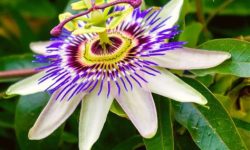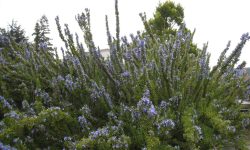The Best Brewing Techniques for Sencha Tea
There is a certain elegance and artistry that goes into making a perfect cup of sencha tea. From choosing the right tea leaves to mastering the art of infusion, every step in the process plays a crucial role in ensuring a delightful experience for your senses. In this blog post, we will guide you through the key elements involved in preparing the perfect cup of sencha tea. Whether you are a novice or a seasoned tea connoisseur, these tips and techniques will help elevate your tea brewing skills to new heights. Get ready to indulge in the soothing flavors and delicate aromas of sencha tea like never before.
Choosing the right sencha tea leaves
When it comes to enjoying a cup of sencha tea, one of the most important aspects to consider is choosing the right sencha tea leaves. The quality and taste of your brewed tea largely depends on the leaves you use. Here are some key factors to keep in mind when selecting sencha tea leaves:
1. Origin: The origin of the tea leaves plays a significant role in determining their quality. Sencha tea leaves are primarily grown in Japan, with each region producing its own unique flavors and characteristics. Some popular regions for sencha production include Uji, Shizuoka, and Kagoshima. Do some research or ask your tea supplier about the origin of the tea leaves before making your selection.
2. Grade: Sencha tea leaves are graded based on their quality and appearance. Higher-grade teas are generally more delicious and flavorful. Look for leaves that are bright green in color and have a fine, needle-like shape. These characteristics are often signs of a high-quality sencha. Avoid leaves that appear dull or have a brownish tint.
3. Freshness: Freshness is crucial when it comes to sencha tea leaves. The fresher the leaves, the better the taste. Look for tea leaves that have been harvested recently and properly stored to maintain their freshness. Avoid leaves that have been sitting on store shelves for too long.
By considering these factors and paying attention to the quality of the sencha tea leaves, you can ensure a delightful and flavorful cup of tea. Remember, the right choice of tea leaves sets the foundation for a perfect cup of sencha!
Preparing the water temperature and quality
When it comes to preparing a perfect cup of sencha tea, one crucial factor that often gets overlooked is the water temperature and quality. The water you choose to brew your sencha tea can greatly impact its taste, aroma, and overall quality. To ensure a delightful tea experience, it is essential to pay attention to the temperature of the water as well as its purity.
For optimal results, the water temperature for brewing sencha tea should be around 70-80°C (160-175°F). Water that is too hot can result in a bitter and overpowering taste, while water that is not hot enough may not extract the full flavor profile of the tea leaves. It is recommended to use a thermometer or an electric kettle with temperature control to accurately measure the water temperature.
Furthermore, the quality of the water you use plays a significant role in the final taste of your sencha tea. The ideal water should be fresh, clean, and free of any odors or impurities. If your tap water has a strong chlorine odor, it is advisable to use filtered or bottled water to brew your sencha tea. Hard water with high mineral content can also affect the taste, so opting for softer water can enhance the flavors of the tea.
In summary, the water temperature and quality are crucial elements in preparing a delightful cup of sencha tea. By ensuring the water temperature is within the recommended range and using clean and pure water, you can fully unleash the flavors and aromas of the tea leaves. Remember, small details like these can make a significant difference in your tea-drinking experience.
List of key takeaways:
- Water temperature for sencha tea should be around 70-80°C (160-175°F).
- Using a thermometer or temperature-controlled kettle is ideal for accurate temperature measurement.
- The water should be fresh, clean, and free of any odors or impurities.
- Filtered or bottled water can be used if tap water has a strong chlorine odor.
- Softer water is recommended to enhance the flavors of sencha tea.
Table: Water Temperature Recommendations for Different Tea Types
| Tea Type | Water Temperature (°C) | Water Temperature (°F) |
|---|---|---|
| Green Tea (Sencha) | 70-80°C | 160-175°F |
| Black Tea | 95-100°C | 205-212°F |
| Oolong Tea | 85-95°C | 185-203°F |
| White Tea | 75-85°C | 167-185°F |
Ensuring the ideal steeping time
When it comes to brewing the perfect cup of sencha tea, ensuring the ideal steeping time is crucial. Steeping time refers to the amount of time the tea leaves are left to infuse in hot water in order to extract their flavors and benefits. Too short of a steeping time may result in a weak and underwhelming cup, while steeping for too long can lead to a bitter and astringent taste. Therefore, finding the perfect balance and knowing the ideal steeping time is essential for a delightful sencha tea experience.
There are various factors that can influence the ideal steeping time for sencha tea. One important factor is the type and quality of the tea leaves being used. Each variety of sencha tea may have different recommended steeping times due to variations in leaf size, processing methods, and moisture content. It is advisable to follow the instructions provided by the tea manufacturer or refer to a reliable source when it comes to determining the ideal steeping time for your specific sencha tea.
Another factor to consider is personal preference. Some individuals prefer a milder and lighter cup of sencha tea, while others enjoy a stronger and more robust flavor. The steeping time can be adjusted based on individual taste preferences. It may be necessary to experiment with different steeping times to find the perfect balance of flavors that suits your palate.
- Steeping time recommendations:
- For a light and delicate cup of sencha tea, steep for 1-2 minutes.
- For a more balanced and flavorful cup, steep for 2-3 minutes.
- For a stronger and bolder taste, steep for 3-4 minutes.
- It is important to note that steeping sencha tea for longer than 4 minutes may result in a bitter and unpleasant taste.
Using a timer can be helpful in order to precisely adhere to the recommended steeping time. Additionally, it is advisable to avoid leaving the tea leaves in the water after the recommended steeping time has elapsed, as this can lead to over-extraction and bitterness. Removing the tea leaves promptly ensures a balanced and enjoyable cup of sencha tea.
Utilizing the correct brewing vessel
When it comes to enjoying a perfect cup of sencha tea, choosing the right brewing vessel plays a crucial role. The vessel not only affects the taste and aroma of the tea but also enhances the overall tea-drinking experience. Therefore, it’s important to utilize the correct brewing vessel to get the most out of your sencha tea leaves.
A traditional brewing vessel for sencha tea is a small teapot called a kyusu. Made from various materials such as ceramic, porcelain, or clay, the kyusu is designed to retain heat and bring out the flavors of the tea. The material of the kyusu can have a subtle influence on the taste and aroma of the tea. For example, clay kyusu is known for enhancing the natural sweetness of the tea, while porcelain kyusu is great for preserving the delicate nuances.
Another popular brewing vessel for sencha tea is a gaiwan. Originating from China, a gaiwan is a lidded bowl with a saucer and it offers a more versatile brewing experience. It allows the tea leaves to unfurl fully, releasing their flavors and aromas. The gaiwan is particularly suitable for appreciating the appearance and color of the steeped tea. Additionally, its wide opening makes it easy to control the brewing process and ensure optimal infusion.
In addition to kyusu and gaiwan, there are other brewing vessels that can be used to brew sencha tea such as glass teapots or even a simple mug. Glass teapots allow you to appreciate the beautiful colors and leaves unfurling during brewing, while a mug can be a convenient and easy option for daily tea preparation. However, it’s important to keep in mind that the material and shape of the vessel can influence the taste and aroma of the tea.
When selecting a brewing vessel for sencha tea, it’s essential to choose one that meets your personal preferences and enhances your tea-drinking experience. Whether you opt for a traditional kyusu, a versatile gaiwan, or any other vessel, make sure to pay attention to the material, shape, and size that best suit your taste. By utilizing the correct brewing vessel, you can truly enjoy the full flavors and aromas of sencha tea.
Keywords: brewing vessel, sencha tea, kyusu, gaiwan, taste, aroma, material, clay, porcelain, glass teapots, mug.
Implementing proper water-to-tea ratio
When it comes to enjoying a cup of sencha tea, implementing the proper water-to-tea ratio is crucial. The ratio between the amount of water and the amount of tea leaves determines the strength and flavor of the brew. By finding the right balance, you can create a delightful and refreshing cup of sencha tea.
To achieve the ideal water-to-tea ratio, it is recommended to use approximately one teaspoon of sencha tea leaves for every 8 ounces of water. This ratio can be adjusted slightly according to personal preference. If you prefer a stronger brew, you can increase the amount of tea leaves, while if you prefer a milder taste, you can reduce the amount.
It is important to note that using too much tea leaves or too little water can result in an overly strong or diluted brew. By following the recommended water-to-tea ratio, you can ensure that the flavors of the sencha tea are properly extracted, resulting in a balanced and enjoyable cup of tea.
Mastering the art of sencha tea leaf infusion
When it comes to enjoying a flavorful cup of sencha tea, mastering the art of sencha tea leaf infusion is essential. Infusion is the process of extracting the delicate flavors and aromas from the tea leaves by steeping them in hot water. To achieve the perfect infusion, a number of factors need to be taken into consideration.
The first step in mastering the art of sencha tea leaf infusion is choosing the right sencha tea leaves. High-quality sencha leaves that are fresh and vibrant in color will provide a more enjoyable tea-drinking experience. Look for leaves that are tightly rolled and have a rich, grassy aroma.
Next, it is important to prepare the water at the ideal temperature and quality. Water that is too hot can result in a bitter or astringent flavor, while water that is too cool may not extract the full range of flavors from the tea leaves. The recommended water temperature for sencha tea infusion is around 70-80°C (158-176°F).
Ensuring the ideal steeping time is another crucial aspect of mastering sencha tea leaf infusion. Over-steeping can lead to a bitter taste, while under-steeping may result in a weak and flavorless brew. For sencha tea, a steeping time of 1-2 minutes is generally recommended.
Utilizing the correct brewing vessel is also important. Using a tea pot or a kyusu, a traditional Japanese teapot, allows for better heat retention and control during the infusion process. This helps to release the flavors and aromas of the sencha tea leaves more effectively.
Implementing the proper water-to-tea ratio is crucial for a balanced and flavorful cup of sencha tea. The recommended ratio is approximately 1 teaspoon of sencha tea leaves per 8 ounces of water. Adjusting the ratio to personal preference can be done, but keeping it within a reasonable range ensures a well-balanced brew.
By following these guidelines and mastering the art of sencha tea leaf infusion, you can unlock the full potential of this beloved Japanese tea. Experimenting with different tea leaves, water temperatures, steeping times, and brewing vessels can help you discover your preferred brewing method and create a cup of sencha tea that is personalized to your taste.
Frequently Asked Questions
How do I choose the right sencha tea leaves?
When selecting sencha tea leaves, look for vibrant green leaves that have been harvested in the first flush of the growing season. These leaves are known to have the best flavor and aroma.
What should be the water temperature and quality for brewing sencha tea?
For brewing sencha tea, it is recommended to use water that is around 70-80°C (160-175°F). Avoid using boiling water as it can scorch the delicate tea leaves and result in a bitter taste.
What is the ideal steeping time for sencha tea?
The ideal steeping time for sencha tea is around 1-2 minutes. Steeping the tea for longer may extract too much bitterness. It is important to follow the steeping time closely to achieve the best flavor.
What kind of brewing vessel should I use for sencha tea?
To brew sencha tea, it is recommended to use a Japanese kyusu teapot or a gaiwan. These vessels allow for better control of water flow and temperature, resulting in a more balanced infusion.
What water-to-tea ratio should I use for sencha tea?
The recommended water-to-tea ratio for sencha tea is approximately 1 gram of tea leaves to 30-40 milliliters of water. Adjust the ratio according to your preferences, but be mindful not to use too much tea or it will become overpowering.
What are some tips for mastering the art of sencha tea leaf infusion?
To master the art of sencha tea leaf infusion, try to pour the water slowly and evenly over the leaves to extract the flavors more evenly. Additionally, experiment with different steeping times and water temperatures to find your perfect balance of taste.
What are the benefits of drinking sencha tea?
Sencha tea is known for its numerous health benefits. It is rich in antioxidants, boosts metabolism, improves digestion, and provides a natural energy boost. Regular consumption of sencha tea can contribute to overall well-being.



